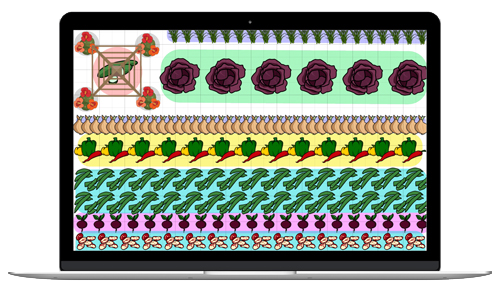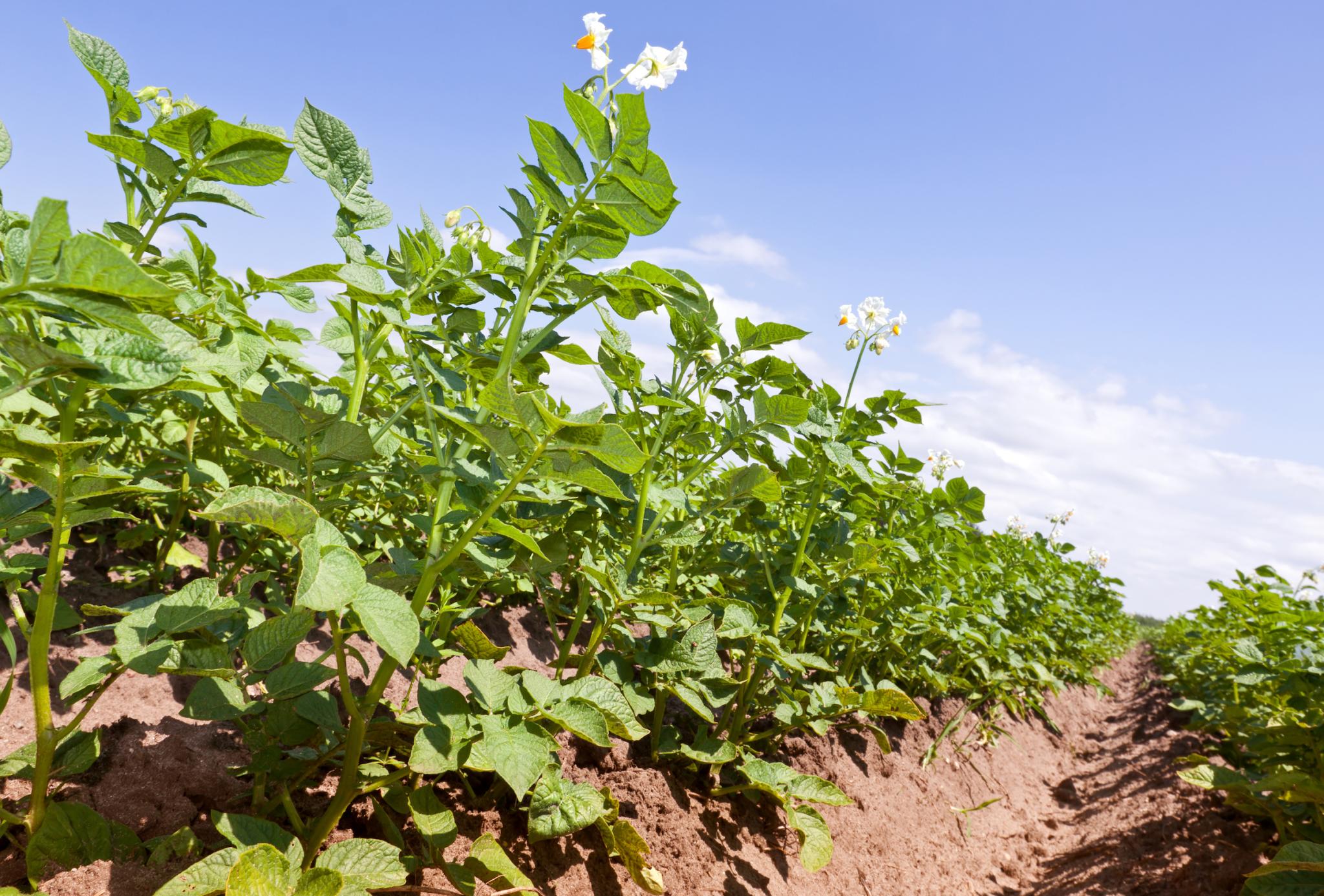
Planting, Growing, Harvesting, and Storing Potato Plants
The Almanac Garden Planner - Use It Free for 7 Days!
Plan your 2025 garden with our award-winning Garden Planner.
There are three classifications for potatoes based on when you harvest (vs. when you plant). If you harvest for storage, be sure to choose the right type:
- Early-season potatoes: first to be planted in early spring. Grow quickly (60 to 80 days), ready to harvest by early summer, tender flesh, thinner skin, store up to a few weeks.
- Mid-season potatoes (aka second early potatoes or “earlies”): mature in 80 to 100 days, typically lifted up from second half of summer, store up to a month.
- Late crops: mature in 100 to 130 days, best for storing, lasting 2 to 3 months in the right conditions; planted in August and harvested in fall.
Also, decide on the texture and flavor of your potatoes, and how you’d like to eat them:
- Dry-fleshed, mealy potatoes like russets and long white potatoes are used for baking, frying, and mashing. As mashed potatoes, they will not be gluey, and they will absorb gravy, butter or sour cream.
- Moist, waxy, round potatoes are great in soups, curries, frittatas, and salads because they don’t fall apart when cooked. You can pan-fry leftover boiled potatoes. When you mash waxy potatoes, they can become sticky.
- Red-skinned potatoes are often used for boiling or for potato salads.
Some popular potato varieties, such as ‘Yukon Gold’, fall somewhere in between truly waxy and mealy.
There are over 100 potato plant varieties! Go beyond the Idaho potato to explore more exotic and delicious options. See our article on choosing the best potato varieties!
Early Varieties:
- ‘Irish Cobbler’: tan skin, irregular shape (great heirloom potato for delicious mashed potatoes!)
- ‘Red Norland’: deep red skin, sweet, delicate flavor, great in potato salads or boiled
- ‘Mountain Rose’: red skin and pink flesh, resistant to some viruses
Mid-Season Varieties
- ‘Yukon Gold’: popular, tan skin and buttery-yellow flesh, mid to large size
- ‘Red Pontiac’: red skin, deep eyes (easiest and most adaptable red potato there is to grow)
- ‘Viking’: red skin, very productive
- ‘Chieftan’: red skin, resistant to potato scab, stores well
Late Varieties
- ‘Katahdin’: tan skin, resistant to some viruses
- ‘Kennebec’: tan skin, resistant to some viruses and late blight
- ‘Elba’: tan skin, large round tubers, resistant to blight and potato scab
- All Blue Potatoes
- ‘Fingerling Salad’ potatoes
Cooking Notes
Potatoes can be prepared in many ways: boiled, mashed, cut into pieces and roasted, french-fried, scalloped, made into dumplings or pancakes, grated into hash browns, and even brewed as alcoholic beverages.
Most potato dishes are served hot, but some are first cooked, then served cold, notably potato salad and potato chips.
ADVERTISEMENT
From Walmart? If they aren't seed potatoes, don't try it. Most potatoes sold for eating are sprayed with sprout inhibitor and will not sprout. However, if they are sold as organic potatoes they will not be treated with inhibitor, and will probably grow just fine.
It appears that your potato plants might be suffering from late blight. Watch this video to learn more about how you can stop the spread and save your potatoes.
Can I cut off the tops of my potatoes as they have taken over and I cant see where the actual plant is to lift and keep damaging the potatoes.
I planted my potatoes in a grow bag and hilled them quite often. I thought they were doing great until they started dying but didn't flower. Does that mean that I won't have any potatoes?
Not all potato plants flower; you still might get potatoes under the ground. Check carefully in the soil to see if you feel any potatoes developing.
I dug down quite a bit and found some little reds growing so I tried to replant them and water them well. Hopefully that will work. After digging the soil seemed really to be in good condition as I was suspicious that I may have watered them too much.
I decided to go ahead and see what I had in my bag. I planted Pontiac Reds in a potatoe bag and followed the instructions pretty well. I thought they were OK until they started to die and they also never flowered. You told me previously that sometimes they don't flower. I have a lot of very very small red potatoes. Some no bigger than a marble. I want to try it again but am fearful that I missed something. I took a picture but it appears there is no way of sending it to you. I am looking for any suggestions so that I can have a fruitful crop. I also have two other potato crops growing in planters and they also seem to be doing OK with flowers. I am going to wait on these as they are still doing great or at least that is the way it looks.
My daughter brought me home some baby blue seed potatoes from her work, so I dug a trench and planted the potatoes, when they got a little taller I put some dirt around them, but that has been it. I have these gorgeous really really tall potatoe plants, that have flowered. I didn't hill the dirt, ever again. So my worry is will I have potatoes? One of them has one of those poisonous berries growing on them. The plants have no bugs and look super healthy. Being a first time grower I had no clue what I was doing, I was excited about attempting to do a garden. The plants are tall so I used some stakes and string to help hold them up.
Trenches that are 7 to 8 inches deep should require less hilling. A relatively shallow trench of about 4 inches would need 6 to 8 inches of hilling. How deep was your trench? Also remember that part of the reason you hill is to keep keep the spuds moist; the soil helps with that. When you reach the desirable height, consider mulching. Potatoes need at least 1 inch of water per week. We hope this helps and that you have a hefty harvest!
I used left over potatoes that I stored poorly as my seed potatoes. Is that bad? I just read your answer to someone else not to use last years potatoes. Some were green as well. Will they be ok? If not, why? What is different about "seed" potatoes as well, thank you:)














